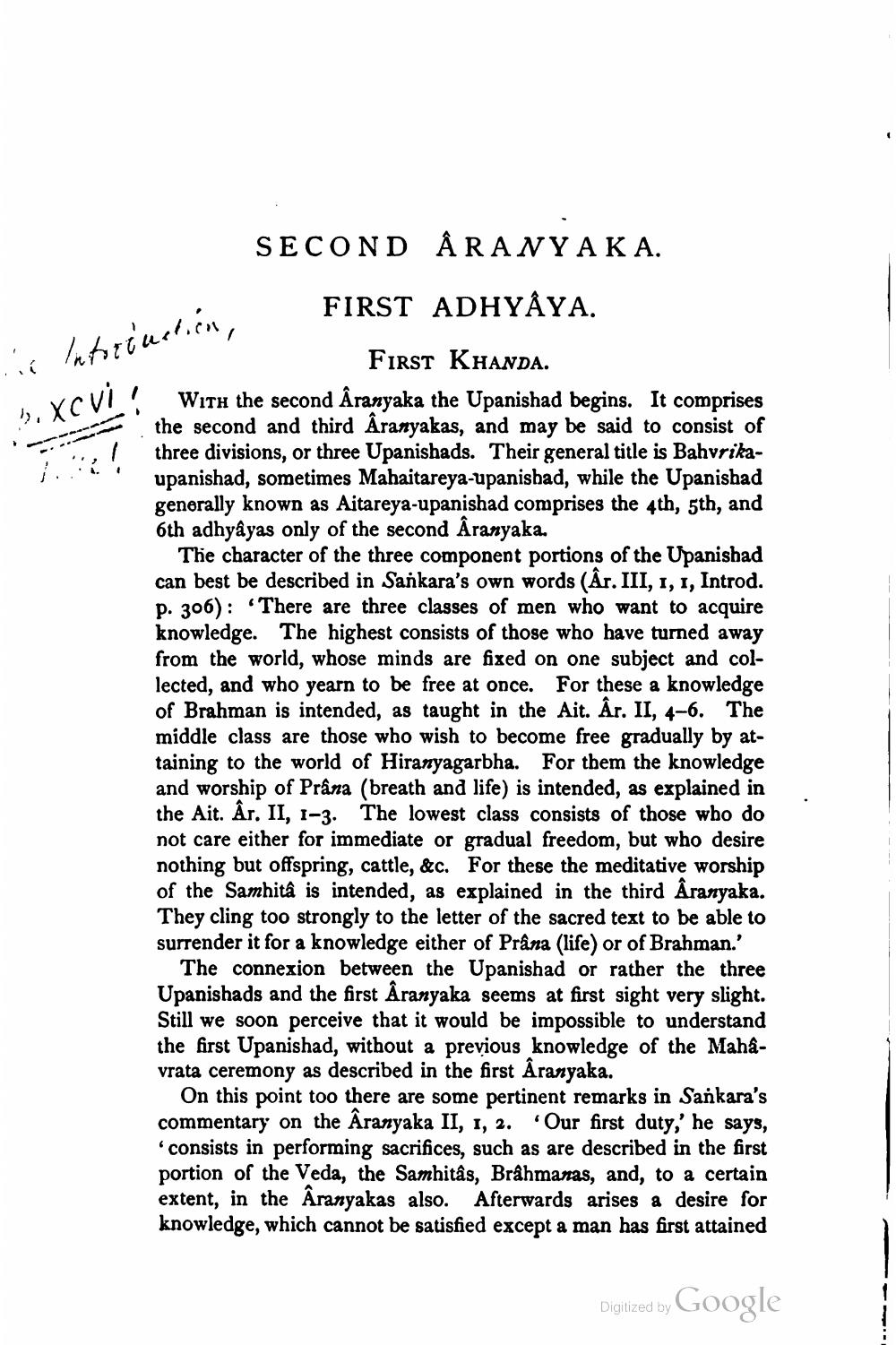________________
in Inforturnien,
XCVI,
SECOND ÅRANYAK A.
FIRST ADHYÅYA.
First KHANDA. With the second Âranyaka the Upanishad begins. It comprises the second and third Aranyakas, and may be said to consist of three divisions, or three Upanishads. Their general title is Bahvrikaupanishad, sometimes Mahaitareya-upanishad, while the Upanishad generally known as Aitareya-upanishad comprises the 4th, 5th, and 6th adhyâyas only of the second Aranyaka.
The character of the three component portions of the Upanishad can best be described in Sankara's own words (Âr. III, 1, 1, Introd. p. 306): There are three classes of men who want to acquire knowledge. The highest consists of those who have turned away from the world, whose minds are fixed on one subject and collected, and who yearn to be free at once. For these a knowledge of Brahman is intended, as taught in the Ait. Ar. II, 4-6. The middle class are those who wish to become free gradually by attaining to the world of Hiranyagarbha. For them the knowledge and worship of Prâna (breath and life) is intended, as explained in the Ait. År. II, 1-3. The lowest class consists of those who do not care either for immediate or gradual freedom, but who desire nothing but offspring, cattle, &c. For these the meditative worship of the Samhitâ is intended, as explained in the third Åranyaka. They cling too strongly to the letter of the sacred text to be able to surrender it for a knowledge either of Prâna (life) or of Brahman.'
The connexion between the Upanishad or rather the three Upanishads and the first Aranyaka seems at first sight very slight. Still we soon perceive that it would be impossible to understand the first Upanishad, without a previous knowledge of the Mahavrata ceremony as described in the first Aranyaka.
On this point too there are some pertinent remarks in Sankara's commentary on the Aranyaka II, 1, 2. Our first duty,' he says, 'consists in performing sacrifices, such as are described in the first portion of the Veda, the Samhitâs, Brâhmanas, and, to a certain extent, in the Aranyakas also. Afterwards arises a desire for knowledge, which cannot be satisfied except a man has first attained
Digitized by Google




